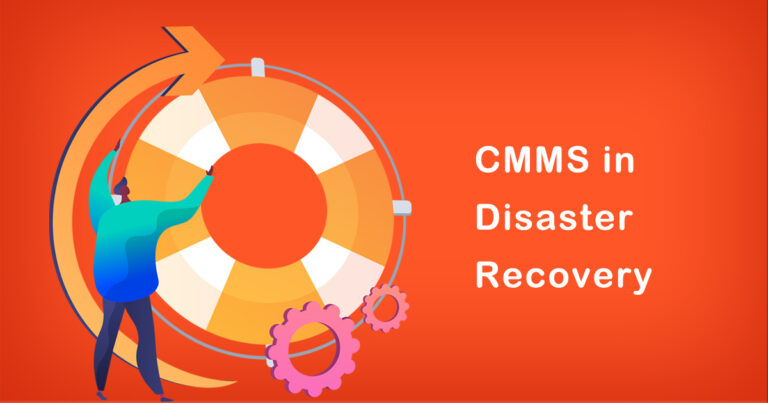Introduction
In today’s rapidly evolving business landscape, effective management of supply chain and storage operations is crucial for the success of any organization. With the growing complexity of these processes, it has become imperative to adopt advanced technological solutions to streamline operations and enhance efficiency. One such solution that has gained significant traction in recent years is Computerized Maintenance Management Systems (CMMS). This article explores the role of CMMS in the context of the supply chain and storage industry in India, highlighting its benefits and key features.
Understanding CMMS:
Computerized Maintenance Management Systems (CMMS) are software applications designed to help organizations manage and optimize their maintenance activities. Originally developed for the maintenance of physical assets, CMMS has expanded its scope to include various functionalities such as inventory management, work order tracking, preventive maintenance scheduling, and reporting. With the integration of CMMS into supply chain and storage operations, businesses can effectively monitor and control their maintenance activities, leading to improved productivity and cost savings.
Key Benefits of CMMS in Supply Chain and Storage Industry:
1. Streamlined Maintenance Processes:
CMMS enables organizations to streamline their maintenance processes by automating routine tasks, such as work order generation, preventive maintenance scheduling, and inventory management. This automation reduces manual errors and ensures timely completion of maintenance activities, minimizing downtime and maximizing operational efficiency.
2. Improved Inventory Management:
Efficient inventory management is critical for businesses operating in the supply chain and storage industry. CMMS provides real-time visibility into inventory levels, allowing organizations to optimize stock levels, track usage, and reorder supplies in a timely manner. By preventing stockouts and overstock situations, CMMS helps reduce costs associated with inventory management.
3. Enhanced Equipment Performance:
With CMMS, organizations can proactively monitor the health and performance of their equipment. Through features like condition-based maintenance and predictive analytics, CMMS enables businesses to identify potential equipment failures in advance, schedule preventive maintenance, and avoid costly breakdowns. This proactive approach to maintenance enhances equipment reliability and extends its lifespan.
4. Regulatory Compliance:
The supply chain and storage industry in India is subject to various regulations and compliance requirements. CMMS assists organizations in adhering to these regulations by maintaining comprehensive maintenance records, conducting audits, and generating compliance reports. This not only ensures legal compliance but also helps in creating a culture of accountability and transparency.
5. Data-driven Decision Making:
CMMS generates a wealth of data related to maintenance activities, equipment performance, and inventory management. By leveraging this data, organizations can make informed decisions regarding maintenance strategies, resource allocation, and process improvements. Data-driven insights provided by CMMS enable businesses to optimize their operations and drive continuous improvement.
Key Features of CMMS for the Supply Chain and Storage Industry:
1. Work Order Management:
CMMS facilitates the creation, assignment, and tracking of work orders, ensuring that maintenance tasks are completed in a timely and organized manner. It provides a centralized platform for technicians to access work instructions, update task statuses, and record maintenance history.
2. Preventive Maintenance Scheduling:
CMMS enables organizations to schedule and track preventive maintenance activities based on predefined criteria, such as time, usage, or condition. This proactive approach helps prevent equipment failures, reduce downtime, and extend asset lifespan.
3. Inventory Management:
CMMS provides tools for inventory tracking, stock replenishment, and material usage monitoring. It helps organizations optimize inventory levels, generate purchase orders, and track spare parts availability, reducing costs and improving supply chain efficiency.
4. Equipment Monitoring and Analytics:
CMMS allows organizations to monitor equipment performance in real-time, capturing data on key performance indicators (KPIs) such as uptime, mean time between failures (MTBF), and mean time to repair (MTTR). Analyzing this data helps identify trends, patterns, and areas for improvement to enhance equipment reliability and operational efficiency.
5. Mobile Accessibility:
Many CMMS solutions offer mobile applications, enabling technicians to access and update maintenance information on-the-go. This feature is particularly valuable in the supply chain and storage industry, where technicians often work in remote locations or across multiple facilities. Mobile accessibility improves communication, reduces response time, and enhances overall productivity.
Conclusion:
The supply chain and storage industry in India is undergoing rapid transformation, driven by technological advancements and increasing customer demands. In this dynamic environment, CMMS plays a crucial role in streamlining maintenance processes, optimizing inventory management, improving equipment performance, ensuring regulatory compliance, and facilitating data-driven decision making. By adopting CMMS solutions, organizations can achieve operational excellence, reduce costs, and gain a competitive edge in the market. As the industry continues to evolve, CMMS will remain an essential tool for businesses seeking to enhance efficiency and meet customer expectations in the supply chain and storage sector.
Disclaimer: The views and opinions expressed in this article are those of the author and do not necessarily reflect the official policy or position of any organization.








